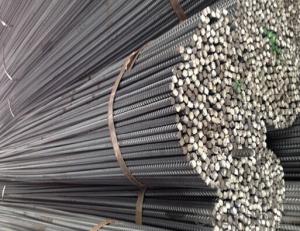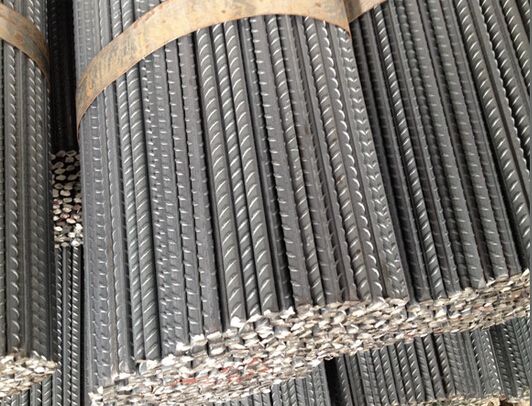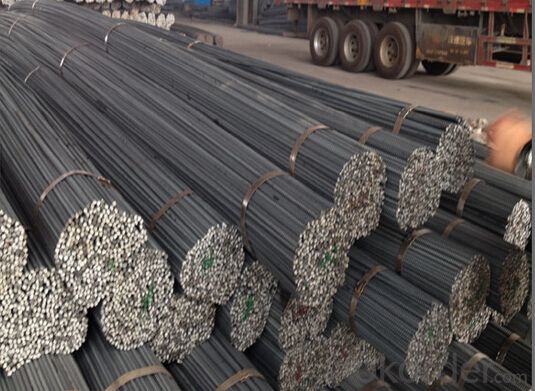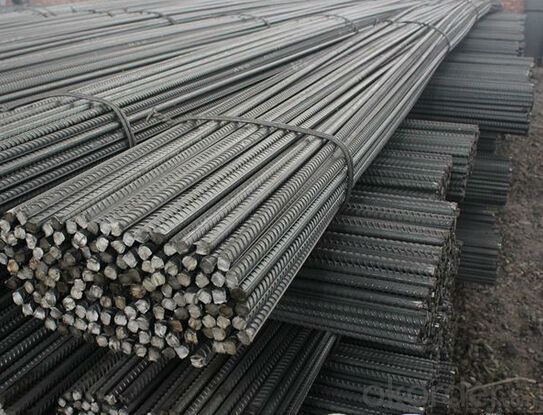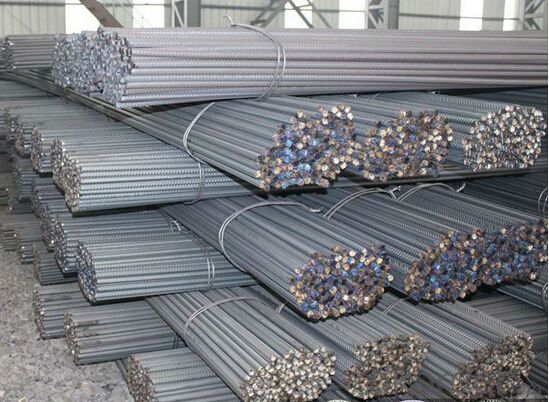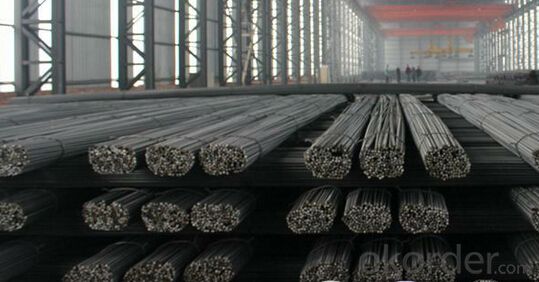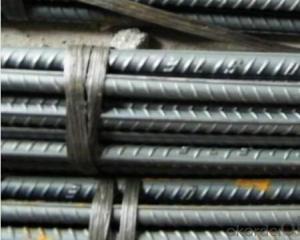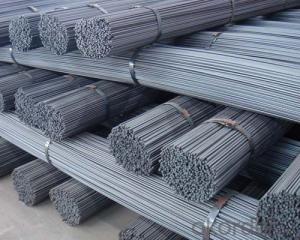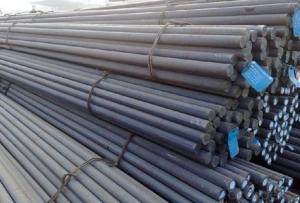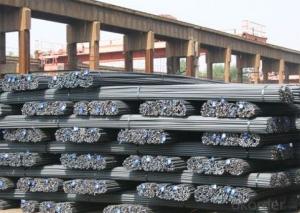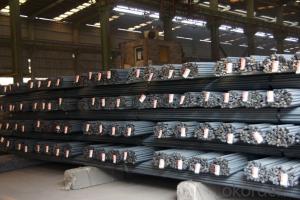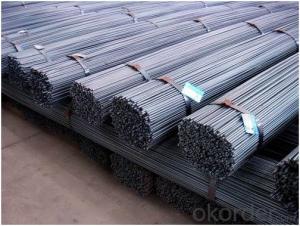High Intensity Seismic Resistent Deformed Steel Rebars HRB500E
- Loading Port:
- Tianjin
- Payment Terms:
- TT OR LC
- Min Order Qty:
- 100 m.t.
- Supply Capability:
- 10000 m.t./month
OKorder Service Pledge
Quality Product, Order Online Tracking, Timely Delivery
OKorder Financial Service
Credit Rating, Credit Services, Credit Purchasing
You Might Also Like
Specification
Standard:
AISI,ASTM,JIS,GB,BS,DIN,API,EN
Technique:
Hot Rolled,Cold Rolled,Cold Drawn,ERW,Forged,Saw,Extruded,EFW,Spring
Shape:
U Channel,Square,C Channel,Hexagonal,Round,Rectangular,Oval,LTZ
Surface Treatment:
Galvanized,Coated,Copper Coated,Color Coated,Oiled,Dry,Chromed Passivation,Polished,Bright,Black,PVDF Coated
Steel Grade:
Q195,Q215,Q235,Q215B,Q235B,RHB335,HRB400,200 Series,300 Series,400 Series,600 Series,SS400-SS490,10#,20#,A53(A,B)
Certification:
ISO,SGS,BV,IBR,RoHS,CE,API,BSI,UL
Thickness:
6-34mm
Width:
6-34mm
Length:
12m
Outer Diameter:
6-34mm
Net Weight:
10kg
Packaging:
seaworthy packaging
High Intensity Seismic Resistent Deformed Steel Rebars HRB500E
Details of the High Intensity Seismic Resistent Deformed Steel Rebars HRB500E
| Standard & Grade: | GB1499-98 : HRB335,HRB400,HRB500 |
| BS4449-1997 : GR460,GR500 | |
| CAN/CSA-G30.18-M92 : 400W | |
| ASTM A615 : Gr.40, Gr.60 | |
| Diameter: | 6mm;8mm;10mm;12mm;14mm;16mm;18mm;20mm;22mm;25mm;28mm;30mm;32mm;35mm;40mm |
| Length: | 6m,9m,12m |
| Packing: | Bundle packing |
| Origin: | China |
| Application: | Construction,Road,Machinery processing,Welding fields. |
| Delivery time: | 10-25 days |
| Shipment: | By bulk vessel or Container |
| Documents: | Mill Test Certificate,Commercial Invoice,Packing List,Certificate of Origin |
Company Introduction of the High Intensity Seismic Resistent Deformed Steel Rebars HRB500E
CNBM International Corporation is the most import and export platform of CNBM group(China National Building Material Group Corporation) ,which is a state-owned enterprise, ranked in 270th of Fortune Global 500 in 2015.
With its advantages, CNBM International are mainly concentrate on Cement, Glass, Iron and Steel, Ceramics industries and devotes herself for supplying high quality series of refractories as well as technical consultancies and logistics solution.
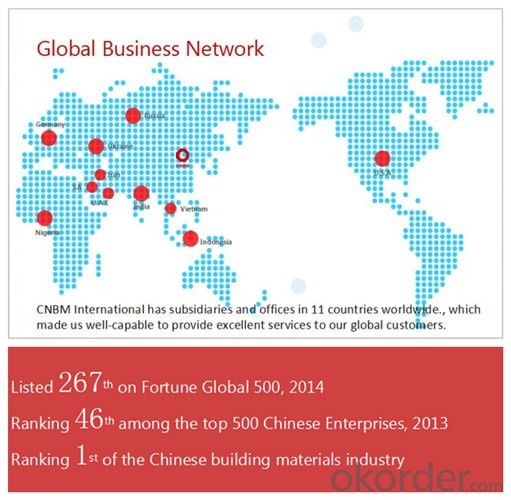
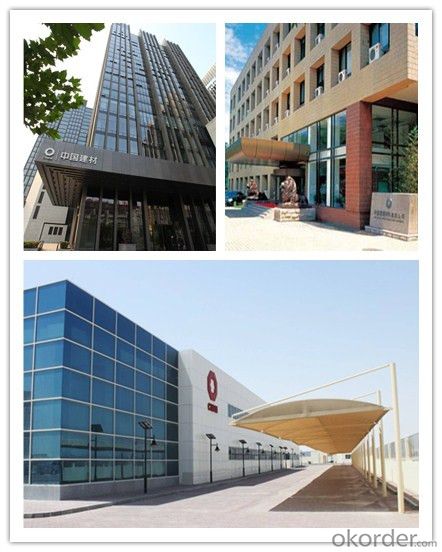
Packaging & Delivery of the High Intensity Seismic Resistent Deformed Steel Rebars HRB500E
| Packaging Detail | Sea worthy packing /as per customer's packing instruction |
| Delivery Detail | 15 ~ 40 days after receiving the deposit |
FAQ
| Are you a trading company or manufacturer? | Manufacturer |
| What’s the MOQ? | 1000m2 |
| What’s your delivery time? | 15-20 days after downpayment received |
| Do you Accept OEM service? | Yes |
| what’s your delivery terms? | FOB/CFR/CIF |
| What's the Payment Terms? | 30% as deposit,70% before shipment by T/T |
| Western Union acceptable for small amount. | |
| L/C acceptable for large amount. | |
| Scrow ,Paybal,Alipay are also ok | |
| Why choose us? | Chose happens because of quality, then price, We can give you both. Additionally, we can also offer professional products inquiry, products knowledge train (for agents), smooth goods delivery, excellent customer solution proposals. |
| What's your available port of Shipment? | Main Port, China |
| What’s your featured services? | Our service formula: good quality+ good price+ good service=customer's trust |
| Where are your Market? | Covering more than 160 countries in the world |
- Q: What are the different corrosion protection methods for steel rebars?
- There are several corrosion protection methods available for steel rebars, which are commonly used in reinforced concrete structures. These methods aim to prevent or minimize the corrosion of the steel rebars, as corrosion can significantly weaken the overall structure. 1. Concrete Cover: The most common corrosion protection method is providing an adequate thickness of concrete cover over the steel rebars. The concrete acts as a physical barrier, preventing exposure of the rebars to corrosive elements. 2. Galvanization: Galvanizing involves coating the steel rebars with a layer of zinc. This protective layer acts as a sacrificial anode, corroding before the steel rebars. Galvanization significantly enhances the rebars' resistance to corrosion. 3. Epoxy Coating: Epoxy coating is a popular corrosion protection method where a layer of epoxy resin is applied over the steel rebars. The epoxy acts as a barrier, preventing moisture and corrosive substances from reaching the rebars. 4. Cathodic Protection: Cathodic protection is an electrochemical method that involves the application of a sacrificial anode or an impressed current system. In a sacrificial anode system, a more reactive metal, such as zinc or magnesium, is connected to the steel rebars, sacrificing itself and preventing corrosion. In an impressed current system, an external power source is used to provide a protective current to the rebars, preventing corrosion. 5. Corrosion Inhibitors: Corrosion inhibitors are chemicals added to the concrete mix or applied as a surface treatment to the rebars. These inhibitors form a protective film on the rebars' surface, preventing corrosion by blocking the access of corrosive agents. 6. Stainless Steel Rebars: Using stainless steel rebars is an effective corrosion protection method. Stainless steel has a high resistance to corrosion, making it suitable for structures exposed to aggressive environments. It is important to note that the selection of the appropriate corrosion protection method depends on various factors, including the environmental conditions, expected service life of the structure, and cost considerations. Additionally, regular inspection and maintenance of the corrosion protection system are essential to ensure its effectiveness over time.
- Q: What is the effect of moisture content on the strength of steel rebars?
- The strength of steel rebars can be significantly affected by their moisture content. When exposed to moisture, particularly water or high humidity, corrosion can occur. This happens when the moisture reacts with the iron in the steel, resulting in the formation of iron oxide or rust. As a result, the steel rebars weaken and their overall strength is reduced. Moisture presence speeds up the corrosion process, causing the gradual loss of structural integrity in the steel rebars. Corroded rebars become brittle and are more prone to fractures or failure when subjected to a load. This can be especially problematic in construction projects that utilize steel rebars to reinforce concrete structures, as the corrosion compromises the durability and safety of the entire structure. Moisture not only directly impacts the strength, but it also contributes to other issues such as cracking, spalling, and concrete degradation. When moisture interacts with the concrete surrounding the steel rebars, it leads to expansion and contraction, resulting in internal stress and potential damage. This further weakens the rebars and the overall structure. To counteract the negative effects of moisture on steel rebars, several protective measures can be adopted. These measures may include the use of corrosion-resistant coatings like epoxy or zinc, which act as a barrier between the rebars and moisture. Additionally, ensuring proper drainage and ventilation in construction projects can prevent the accumulation of moisture, reducing the risk of corrosion and maintaining the strength and longevity of the steel rebars. In conclusion, it is vital to carefully consider the moisture content and its potential impact on steel rebars in any construction project. By addressing and managing moisture, engineers and builders can guarantee the structural integrity and safety of the steel rebars, ultimately improving the strength and durability of the entire structure.
- Q: How do steel rebars contribute to the crack control in slabs and walls?
- Steel rebars contribute to crack control in slabs and walls through their ability to resist tensile forces. When concrete slabs and walls experience loads, such as the weight of the structure or external forces, they may develop tensile stresses. Concrete is strong in compression but weak in tension, making it prone to cracking under tensile forces. Steel rebars are embedded within the concrete to counteract these tensile stresses. By absorbing and distributing the tensile forces, rebars help to prevent crack formation and control their propagation. The rebars act as reinforcement, increasing the overall tensile strength of the concrete. The presence of steel rebars in slabs and walls helps to limit the width and length of cracks that may occur by providing resistance against the tensile stresses. This crack control is crucial for maintaining the structural integrity and durability of the concrete elements. Furthermore, steel rebars can also contribute to crack control by improving the overall ductility of the structure. Ductility refers to the ability of a material to deform under load without fracturing. By enhancing the ductility of the concrete, the rebars allow the structure to absorb energy and deform in a controlled manner, reducing the likelihood of sudden failure or catastrophic collapse. In summary, steel rebars play a vital role in crack control in slabs and walls by increasing the tensile strength of concrete, limiting crack width and length, and improving overall structural ductility. Their presence ensures the long-term durability and safety of these concrete elements.
- Q: Are steel rebars suitable for use in high-traffic areas like bridges?
- Yes, steel rebars are suitable for use in high-traffic areas like bridges. Steel rebars provide exceptional strength and durability, making them ideal for withstanding heavy loads and frequent use. Additionally, steel rebars offer excellent resistance to corrosion, ensuring the longevity and structural integrity of bridges in high-traffic areas.
- Q: What grade of reinforcement is used for cast-in-place floorslab?
- Cast-in-place floors are usually made of grade two steel.Cast-in-place is relative to the precast slab, casting is to place a good template on the site, the installation of steel reinforcement on the template, and then pouring concrete on the template, and then remove the template.
- Q: How do steel rebars resist alkali-silica reaction in concrete?
- The primary reason why steel rebars can withstand the alkali-silica reaction in concrete is because of the passive film that forms on their surface and the alkaline environment of the concrete. When steel rebars are embedded in concrete, they develop a passive film on their surface. This film serves as a protective layer that prevents direct contact between the steel and the aggressive alkali-silica reactive aggregates that are present in the concrete. The formation of this passive film is a result of the high pH of the alkaline environment created by the cement in the concrete, which usually has a pH level of 12-13. This high pH aids in the creation of an oxide layer on the surface of the steel rebar, effectively shielding it from the reactive elements in the aggregates. Moreover, the alkaline environment of the concrete plays a crucial role in maintaining the passivity of the steel rebars. The alkalinity of the concrete enables the passive film to remain stable and intact, providing a continuous barrier against the alkali-silica reaction. As long as the pH of the concrete remains high, the steel rebars will continue to resist the reaction. It is important to note that the thickness and quality of the passive film on the steel rebars are vital in guaranteeing their resistance to the alkali-silica reaction. Any factors that can compromise the integrity of this film, such as carbonation or chloride contamination, can increase the risk of the reaction occurring. In conclusion, the resistance of steel rebars to the alkali-silica reaction in concrete is primarily due to the presence of a passive film on their surface, which is formed by the alkaline environment of the concrete. This film functions as a protective barrier, preventing direct contact between the steel and the reactive aggregates and minimizing the likelihood of the reaction occurring.
- Q: What are the guidelines for ensuring proper concrete cover over steel rebars?
- The guidelines for ensuring proper concrete cover over steel rebars include: 1. Following the specified cover requirements mentioned in the structural design or building codes. 2. Ensuring that the rebars are placed at the correct depth within the concrete to achieve the desired cover. 3. Using appropriate spacers or chairs to maintain the required distance between the rebars and the formwork during concrete pouring. 4. Ensuring proper consolidation of the concrete to eliminate voids or air pockets around the rebars. 5. Regularly inspecting the concrete cover during construction and taking necessary measures to correct any deficiencies. 6. Protecting the rebars from corrosion by using high-quality concrete with appropriate additives and ensuring proper curing of the concrete. 7. Regular maintenance and inspection of the structure throughout its lifespan to ensure the concrete cover remains intact and provides adequate protection to the rebars.
- Q: Are there any environmental concerns associated with steel rebar production?
- Yes, there are several environmental concerns associated with steel rebar production. Firstly, the extraction and processing of iron ore, which is used to produce steel, can lead to deforestation, habitat destruction, and soil erosion. Additionally, the production process emits significant amounts of greenhouse gases, contributing to climate change. Steel rebar production also requires large amounts of water, leading to potential water scarcity issues. Furthermore, the disposal of waste materials and byproducts from steel production can contaminate soil and water bodies, posing risks to ecosystems and human health. Therefore, it is important to consider and address these environmental concerns in the steel rebar production process.
- Q: What are the guidelines for repairing or replacing corroded steel rebars in existing structures?
- The guidelines for repairing or replacing corroded steel rebars in existing structures typically involve the following steps: 1. Inspection: Thoroughly assess the extent of corrosion and determine the overall structural integrity of the rebars. 2. Cleaning: Remove loose rust, scale, and other contaminants from the rebars using suitable mechanical or chemical methods. 3. Surface preparation: Abrade the rebars to create a rough surface, ensuring proper adhesion of repair materials. 4. Repair options: Evaluate different repair methods such as patching, cathodic protection, or complete replacement, considering factors like the severity of corrosion, structural design, and cost-effectiveness. 5. Material selection: Choose appropriate repair materials such as epoxy-based coatings, corrosion inhibitors, or carbon fiber wraps based on the specific requirements and compatibility with the existing rebar and surrounding concrete. 6. Repair execution: Follow established industry practices, standards, and manufacturer's instructions while executing the repair work, ensuring proper application and curing of repair materials. 7. Quality control: Conduct regular inspections during and after the repair process to verify adherence to guidelines, assess the quality of workmanship, and ensure the long-term durability and safety of the repaired rebars. It is important to note that these guidelines may vary depending on local building codes, structural conditions, and the expertise of structural engineers or repair professionals involved. Therefore, it is recommended to consult with qualified professionals for specific guidelines tailored to the project at hand.
- Q: How are steel rebars inspected for quality control?
- Steel rebars are inspected for quality control through various methods such as visual inspection, dimensional checks, and mechanical testing. Visual inspection involves checking for any visible defects, such as rust, cracks, or surface irregularities. Dimensional checks ensure that the rebars meet the required specifications in terms of length, diameter, and shape. Mechanical testing involves conducting tests like tensile strength, yield strength, and bend tests to verify the rebars' performance and structural integrity. Additionally, rebars may undergo non-destructive testing techniques like ultrasonic testing or magnetic particle inspection to detect any internal flaws or defects. These inspection processes help ensure that steel rebars meet the necessary quality standards and are suitable for their intended applications in construction projects.
Send your message to us
High Intensity Seismic Resistent Deformed Steel Rebars HRB500E
- Loading Port:
- Tianjin
- Payment Terms:
- TT OR LC
- Min Order Qty:
- 100 m.t.
- Supply Capability:
- 10000 m.t./month
OKorder Service Pledge
Quality Product, Order Online Tracking, Timely Delivery
OKorder Financial Service
Credit Rating, Credit Services, Credit Purchasing
Similar products
Hot products
Hot Searches
Related keywords
